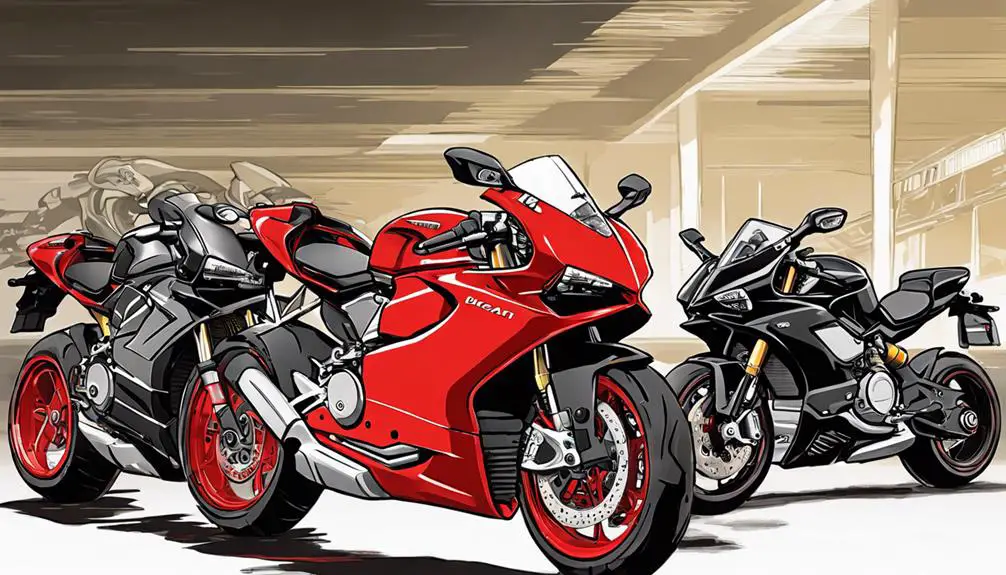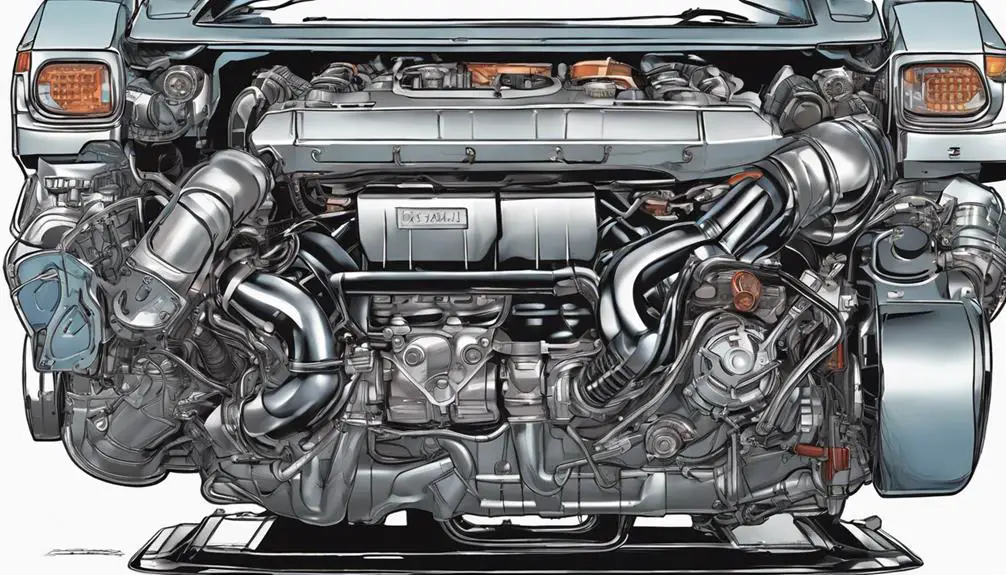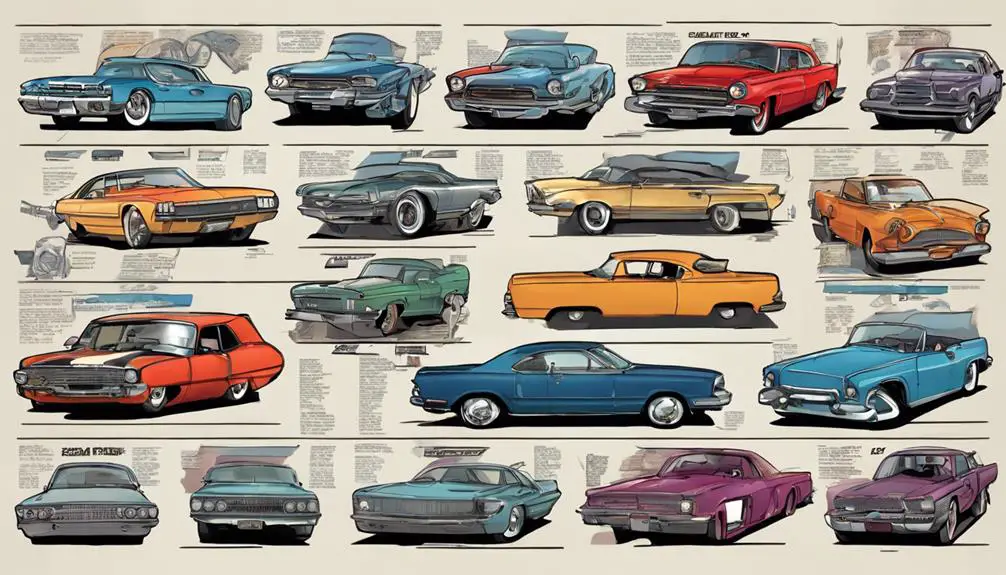You might not realize that engine size isn't just about power; it greatly influences performance and efficiency as well. When you consider the differences between smaller engines and their larger counterparts, you'll find that each size serves specific purposes, from urban commuting to high-speed racing. Understanding these distinctions can help you make informed choices whether you're a novice or a seasoned rider. What's more, the design variations and historical developments behind these sizes can reveal even deeper insights into the automotive world.
Key Takeaways
- Smaller engines (250cc-500cc) are ideal for beginners, providing manageable power and easier handling for urban riding.
- Mid-range engines (600cc-800cc) balance agility and speed, suitable for versatile riding experiences.
- Larger engines (over 1,000cc) deliver increased acceleration and power, enhancing long-distance journeys and sport riding.
- Engine size influences performance traits, such as fuel efficiency, acceleration, and top speed.
Overview of Ducati Engine Sizes

Ducati's engine sizes range from nimble 400cc models to powerful 1,300cc beasts, catering to a variety of riding styles and preferences.
Whether you crave the thrill of zipping through tight city streets or the freedom of long, open highways, Ducati's diverse lineup has something for you. The smaller engines provide agility and responsiveness, making them ideal for urban adventures where every twist and turn counts. You'll feel liberated as you dart between cars and navigate narrow alleyways, all while enjoying the unmistakable roar of a Ducati.
On the other hand, if you're after raw power and adrenaline, the larger engines deliver an exhilarating ride that'll set your heart racing. Imagine conquering mountain roads or feeling the wind against your face as you accelerate down a straight stretch. The robust torque and horsepower invite you to push the limits and experience true freedom on two wheels.
No matter your riding style, Ducati's range of engine sizes empowers you to choose the perfect machine for your journey. You're not just riding; you're embracing a lifestyle that celebrates individuality and adventure.
Explore, conquer, and release your spirit with Ducati.
Common Engine Displacements
Many motorcycle enthusiasts often encounter common engine displacements, which typically range from 250cc to 1,200cc, each offering distinct performance characteristics and riding experiences.
If you're just starting out, you might find 250cc to 500cc engines to be the sweet spot. These smaller displacements provide you with manageable power, making it easier to navigate city streets or winding roads while still feeling the thrill of freedom.
As you gain confidence, you might crave something a bit more powerful. Engines in the 600cc to 800cc range can deliver a balanced blend of agility and speed, perfect for both daily commutes and weekend adventures.
If you're ready to embrace the open road fully, consider displacements over 1,000cc. These beasts offer an exhilarating ride and are designed for those who love long-distance journeys or sport riding.
Ultimately, the choice of engine displacement affects not just how your bike performs, but how it makes you feel. Whether you're cruising through town or carving up mountain roads, finding the right engine size can elevate your riding experience and set you free on two wheels.
Performance Implications

The performance of a motorcycle is markedly influenced by its engine size, affecting acceleration, top speed, and overall riding dynamics. When you twist the throttle, a larger engine typically offers more power, allowing for quicker acceleration that can make you feel like you're flying down the road. If you crave that exhilarating rush, a bigger engine can definitely deliver, giving you the freedom to overtake and merge effortlessly.
On the other hand, smaller engines can provide a different kind of thrill, often offering lighter handling and better maneuverability. You might find that these bikes are more agile, making them perfect for traversing tight corners and urban environments. They can also be more fuel-efficient, which means you can ride longer without stopping for gas—an appealing thought for those seeking adventure.
Ultimately, the choice between engine sizes hinges on your riding style and the kind of experience you want. Whether you're chasing speed or enjoying nimble rides through the city, understanding how engine size impacts performance empowers you to make the right choice for your journey.
Ride free, and let your engine be the voice of your freedom.
Engine Design Variations
Understanding engine size also leads you to investigate the variations in engine design, which can greatly influence a motorcycle's characteristics and performance. Different designs offer unique benefits, shaping your riding experience in profound ways.
For example, a V-twin engine delivers a powerful low-end torque, ideal for those who crave thrilling acceleration. If you're seeking a smoother ride, an inline-four engine might be your go-to, providing a high-revving experience that feels liberating on the open road.
Then there are the single-cylinder engines, known for their simplicity and lightweight nature, perfect for those who prefer agility and maneuverability. Each design doesn't just impact power output; it also affects handling and weight distribution, tailoring your ride to your desires.
As you investigate engine design variations, consider how each type aligns with your personal riding style. Whether you want the raw power of a cruiser or the agile responsiveness of a sportbike, understanding these designs empowers you to make a choice that resonates with your spirit of freedom.
Historical Evolution of Sizes

Over the decades, motorcycle engine sizes have evolved considerably, reflecting advancements in technology and changes in rider preferences.
In the early days, you'd find small displacement engines, often under 250cc, perfect for city commuting. These lightweight machines were all about ease and maneuverability, giving you the freedom to navigate crowded streets.
As the motorcycle culture grew, so did the appetite for power and speed. By the 1970s and 1980s, larger engines became the norm, with many bikes sporting 750cc to 1000cc engines. This shift wasn't just about raw power; it signified a desire for freedom on open roads, allowing you to conquer longer distances with ease.
Today, you're witnessing a diverse range of engine sizes, from nimble 125cc scooters to powerful 2000cc cruisers. Manufacturers cater to every kind of rider, whether you crave the liberation of a lightweight bike or the thrill of a heavyweight beast.
This journey of evolution reflects not just technological progress, but also your ever-changing pursuit of freedom on two wheels. So, as you ride, remember the rich history of engine sizes that's paved the way for your adventures today.
Frequently Asked Questions
How Does Engine Size Affect Fuel Efficiency?
When you consider how engine size affects fuel efficiency, you'll find that smaller engines often use less fuel, especially during city driving.
They're lighter and require less energy to operate, which can lead to better gas mileage.
However, larger engines might perform better on highways or when towing.
It's all about balance; understanding your driving needs can help you choose the right engine size for peak fuel efficiency and freedom on the road.
What Role Does Engine Size Play in Motorcycle Licensing?
When you think of motorcycle licensing, picture a vast open road, freedom calling.
Engine size plays a pivotal role in this journey. Different jurisdictions have specific regulations that classify motorcycles based on engine displacement.
If your bike's engine exceeds a certain size, you might need a more advanced license. This guarantees you're equipped to handle the power and responsibility, so your ride remains safe and exhilarating as you embrace the horizon.
Are Larger Engines Always More Powerful?
Larger engines aren't always more powerful. While many assume size equals strength, you've got to evaluate factors like design and technology.
A smaller engine with advanced engineering can outperform a larger, outdated one. Power isn't just about displacement; it's about efficiency and how well the engine converts fuel into motion.
How Do Environmental Regulations Impact Engine Sizes?
Imagine cruising on a horse-drawn carriage while the world shifts towards cleaner rides.
Environmental regulations push you to reflect on smaller, more efficient engines that reduce emissions.
These laws encourage innovation, prompting manufacturers to create engines that meet strict standards without sacrificing performance.
Can Engine Size Influence Insurance Costs?
Yes, engine size can influence your insurance costs.
Generally, larger engines may lead to higher premiums because they're often associated with higher performance and speed. Insurers view this as a greater risk, which can translate to increased rates.
However, if you choose a smaller, fuel-efficient engine, you might save on both fuel and insurance.
It's smart to reflect on how your vehicle choice aligns with your budget and your desire for liberation on the road.
Conclusion
In conclusion, understanding engine sizes helps you make informed choices based on your riding style and needs.
Whether you lean towards the agility of smaller engines or the raw power of larger ones, each offers unique advantages.
So, what kind of ride do you envision for yourself?
Ultimately, the right engine size can enhance your experience and guarantee that every journey is enjoyable, whether you're zipping through city streets or cruising on long highways.